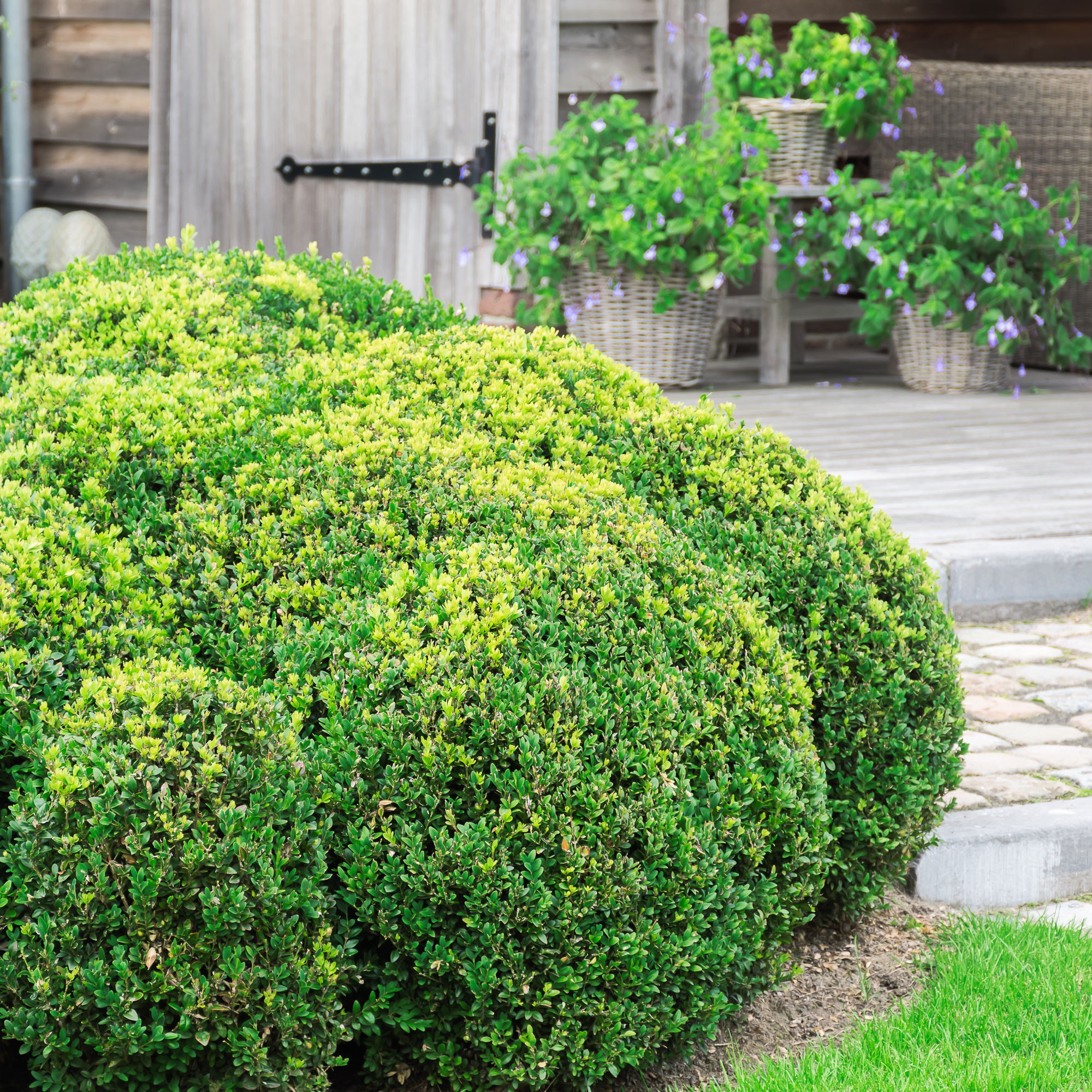What is cloud pruning? Here’s how to nail the Japanese gardening trend at home
Also known as 'Niwaki', here’s what you need to know about cloud pruning…


Cloud pruning is, quite honestly, one of those zen garden ideas that we can't get enough of – not least of all because it adds some serious oomph to our most beloved evergreen plants.
Oh yes, while it's all too easy to think there's just one way to cut back evergreen shrubs, nothing could be further from the truth. This Japanese method of training trees and shrubs into cloud-like shapes is fast becoming a trend in a number of major gardens across the country like RHS Wisely.
What is cloud pruning?
The clue is in the name with this one; cloud pruning sees gardeners whip out their pruning shears to transform plants into the shapes of clouds.
'Cloud pruning – "Niwaki" in Japanese – is growing in popularity,' says award-winning garden designer Zoe Claymore, who notes that she has seen more requests for this style than ever, particularly for town gardens where people want serenity, consistency and a year-round green focal point.

Zoe Claymore is a multi award-winning garden designer based in London. She focuses on creating outdoor places with emotional connection and ecological integrity for her private and commercial clients.
Dubbing it a 'fresh more modern take on traditional topiary', Zoe adds that cloud pruning is an ideal choice for small gardens with varying light levels.
'These soft, cloud-like forms are a perfect blend of nature and art,' she notes.

What you will need
If you're keen to give cloud pruning a go, you will need some high-quality pruning tools to hand.
Stick the following on your shopping list, then...
- bypass secateurs for smaller stems, like ARS Professional Bypass Secateurs from Amazon
- a pruning saw for tougher wood, like the WOLF-Garten Professional Pruning Saw from B&Q
- a pair of loppers for tall branches, such as the Spear & Jackson 4822RSA Razorsharp Active Bypass Lopper from Amazon
- a sturdy and supportive ladder is a must, like the Henchman Fully Adjustable Tripod Ladder.
Step-by-step guide
Now that you have all the tools you need, you can try your hand at the art of cloud pruning (with a little help from our experts, of course).
1. Choose and visualise
It's important to visualise the shape you want your shrub to take come the end of your cloud pruning session before you even so much as look at a pair of secateurs.
'To start, choose a shrub with strong branch structure,' says Steve Swanborough, gardening expert at Henchman, who notes that pine, yew, and boxwood are great options.
'Next, visualise how you’d like it to look - it might help to sketch it out or create a vision board before getting stuck in. Begin by identifying key branches that will form the framework, while removing dead, weak or misplaced growth to reveal the plant structure.'

2. Begin making cuts
Cloud pruning may look incredibly difficult but, once you've sketched out your design, it's really just a case of trimming your shrub with sharp, clean blades.
'Next, prune the healthy branches into rounded pads or clouds, trimming the foliage and leaving gaps between the layers to create the signature floating effect,' says Steve.
'Be sure to take your time and take a step back regularly to make sure the overall shape is symmetrical and following your intended design.'
3. Show it some TLC
Finally, it's best to never assume you've finished when it comes to cloud pruning, as you will need to keep trimming your shrubs throughout the year if you want to maintain that beautiful rounded shape.
'To maintain your cloud structure, lightly prune the shrub or tree throughout the growing season,' says Steve.
'Patience is essential as the process and final design evolves with the plant’s growth, but in time you can be rest assured that your hard work will turn into a stunning focal point that complements your garden’s elegance and shows off your creativity!'

FAQs
When should I start cloud pruning?
If you're not sure when to start cloud pruning, the plant boffins at the Royal Horticultural Society (RHS) suggest you 'trim annually with secateurs or shears in early or late summer to keep specimens in shape'.
'Faster growing species may need to be trimmed twice a year,' they add, noting that any flowering shrubs must be pruned after they've finished blooming.
What plants are best for cloud pruning?
If you're not sure which plants are best for cloud pruning, garden designer Zoe Claymore says you should try this trend out on 'evergreens like boxwood (only do this up north though), osmanthus, ilex crenata (japanese holly) and yew'.
'These are particularly popular as they respond well to precise shaping,' she says. 'However, due to popularity the number of cultivars you can buy in this form is increasing to include deciduous varieties.'
And just like that, you have the basics of cloud pruning! We suggest you use the winter months to take a walk around your garden, suss out the plants that will respond best to this type of pruning, and sketch out some designs.
Or, of course, you can buy a ready-shaped specimen... but where would be the fun in that?
Get the Ideal Home Newsletter
Sign up to our newsletter for style and decor inspiration, house makeovers, project advice and more.

Kayleigh Dray became Ideal Home’s Acting Content Editor in the spring of 2023, and is very excited to get to work. She joins the team after a decade-long career working as a journalist and editor across a number of leading lifestyle brands, both in-house and as a freelancer.
-
 A strict colour palette and vintage finds have turned this semi-detached Edwardian house into an elegant family home
A strict colour palette and vintage finds have turned this semi-detached Edwardian house into an elegant family homeSticking to a three-colour palette of green, pink and yellow and mixing in plenty of vintage furniture and art has created an authentic period feel
By Stephanie Smith
-
 A top-to-bottom renovation has turned this Edwardian house into a lovely family home
A top-to-bottom renovation has turned this Edwardian house into a lovely family homeWith a few considered structural changes, this period house has been turned into a family home and has created a sanctuary for years to come
By Maxine Brady
-
 How to heat a conservatory
How to heat a conservatory7 practical options to consider for year-round comfort
By Amy Reeves